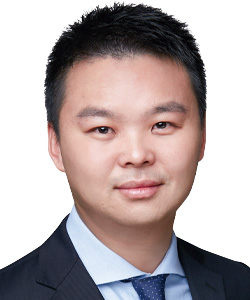Listed companies have been extremely active in the field of private equity (PE) funds in recent years, both as managers and investors. In fact, listed companies have participated in the establishment of private equity investment fund management platforms since 2010.
Dakang Farming (renamed Dakang Agriculture) and Silicon Paradise jointly established a merger and acquisition (M&A) fund in 2011, which was regarded as the beginning of the “listed company + PE” pattern. Listed companies have explored many models for establishing funds in co-operation with PE institutions through practice.

Non-equity Partner
Zhong Lun Law Firm
Some of them present various commercial demands based on control rights, consolidated statements, exit methods, nature of partners and balance of interests. Some of them include compliance considerations such as information disclosure and supervision of the Asset Management Association of China (AMAC).
The organizational forms of PE investment funds can be divided into limited partnerships, companies and contractual funds. Currently, the market is dominated by limited partnerships. Therefore, the following analysis is made mainly based on limited partnership funds.
Form 1: A listed company or its wholly-owned/held subsidiary acts as the limited partner (LP) of a fund, and an external institution acts as the general partner (GP) and manager of the fund.
Other LPs may include major shareholders and other related parties of the listed company, other companies related to the industry of the listed company, and market investors raised by the manager.
According to the Partnership Law, the GP of a fund performs partnership affairs on behalf of the fund and assumes unlimited joint and several liability. The LP does not perform partnership affairs. The listed company generally does not control the fund, and the fund is not included in the consolidated statement of the listed company under such a structure.
However, it should be noted that at present, when a listed company only acts as an LP, it may appoint members to the investment decision-making committee (the investment committee) of the fund, and the appointed members of the investment committee occupy a majority of seats and have one veto.
A listed company under such a case may be deemed to have actual control over the fund based on the principle of substantive judgment. Meanwhile, the listed company may also face the risk that it may be deemed to have actually performed partnership affairs for holding a majority of seats in the investment committee.
The management fees and revenue share at the fund level are generally paid directly to the external institutions, who act as GP and manager under such a structure. Listed companies mainly receive investment income from the fund level.
You must be a
subscribersubscribersubscribersubscriber
to read this content, please
subscribesubscribesubscribesubscribe
today.
For group subscribers, please click here to access.
Interested in group subscription? Please contact us.



























